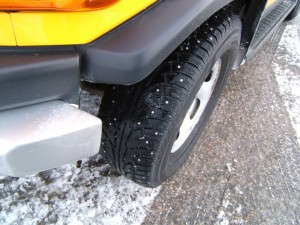Important Than Ever
Fleet electrification is now at a point we might call “technological and economic maturity.” As it relates to electric vehicles (EVs), they’re becoming increasingly affordable, cost effective, capable, and able to perform nearly all the functions of ICE (internal combustion engine) vehicles.
Full vehicle electrification means zero tail pipe emissions, and this fundamental transformation of powertrain technology can (and will) yield a similarly transformational moment for the planet, as vehicle exhaust emissions are greatly reduced, and air quality improves.
While it’s not yet possible to replace every ICE vehicle in the world with an EV, one area ripe for change is fleets. Whether it’s a multinational delivery company, or your local county government, organizations all over North America are seeing the long-term benefits of adopting EVs into their fleets.
ICE Cars and Truck = Bad Air
One of the biggest vehicle segments of polluters in the world is ICE fleets. Every day, millions of ICE vehicles take to the roads and highways of the world to deliver the goods and services that support our modern societies. For any company with a fleet, transitioning away from emissions-heavy vehicles to zero emissions and trucks offer a huge, proportional decline in greenhouse gas emissions. For these companies, the fastest path to meeting corporate environmental goals is integrating EVs into their ESG (Environmental, Social and Governance) strategies.
ESG is Key
ESG is often referred to as sustainability in a business context, but it’s also directly related to a company’s business model; that is, how its products and services contribute to sustainable development. It’s also about a company’s growth and risk management (how it manages its own operations to minimize negative impact).
As organizations adopt and embrace the global ESG push, EVs will play a key role. The speed, simplicity, and effectiveness of adopting EVs can be illustrated in the following examples. Imagine a mid-sized bakery that delivers bread in a city. The bakery might have several ICE delivery vans that bring baked goods and breads to restaurants and various customers, but it also wants to align with ESG goals it has set for itself. In the short term, the bakery might not have the ability to quickly reinvent a more sustainable way to make bread or the time to source sustainably farmed raw materials. But switching to an EV-based fleet (which can be done relatively quickly) not only has an immediate benefit
for their town’s air, but also almost instantly provides the bakery with a big checkmark in the ESG column, and gives them more time to evaluate better, more sustainable ways to produce their goods. Similarly, a giant international plastics company might not have the advanced engineering technologies to make plastics from renewable raw materials. But what it can do is offset its (rather large) emission footprint by adopting the hundreds if not thousands of EVs it will use to deliver product across the globe.
In almost every case, converting to EVs allows a company to say with conviction that “we are truly doing something big for sustainability,” without disrupting every component of their day-to-day operations.
Change is… Easy
The EV revolution is here, and this technology is only getting more powerful, efficient, and affordable. The sooner that you, the local bakery, and the large multi-national plastics maker begin to leverage this technology, the sooner you can start saving money, make your business more sustainable, and position yourself as an industry leader. Converting even a small percentage of ICE vehicles on the road today to a zero-emission powertrain can result in truly remarkable results for both your business and the planet. A trusted EV expert like Merchants Fleet can help you navigate the EV adoption journey by implementing AdoptEV, our proprietary five-step EV implementation framework to both strategically and logistically prepare your organization for the electrification of your fleet and a sustainable
tomorrow.
Author/Author Bio:
Hari Nayar serves as the Director of Electrification & Sustainability at Merchants Fleet. A leading fleet electrification expert, Nayar focuses on providing fleet clients with the tools and insights they need to make a seamless and cost-effective entry into the electric vehicle market.

 Over the last few years the government has cracked down on car drivers who have switched tires for the season but haven’t had their Tire Pressure Monitoring System (TPMS) replaced. Most garages used to replace them for free back in the day but nowadays you will see plenty of garages charging for this.
Over the last few years the government has cracked down on car drivers who have switched tires for the season but haven’t had their Tire Pressure Monitoring System (TPMS) replaced. Most garages used to replace them for free back in the day but nowadays you will see plenty of garages charging for this.








